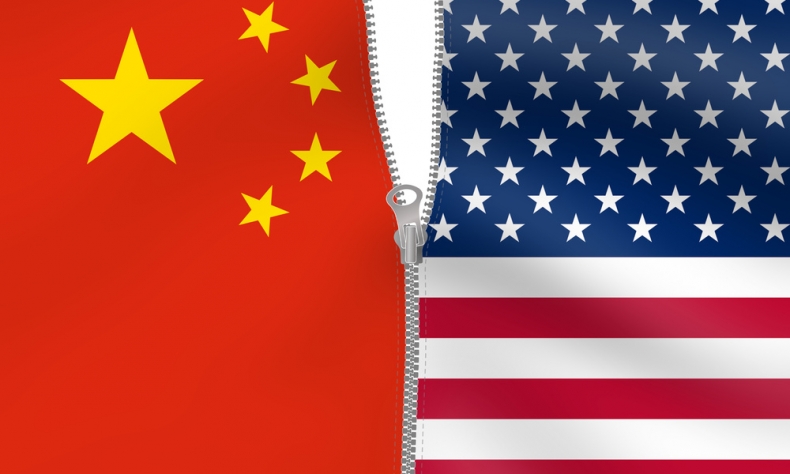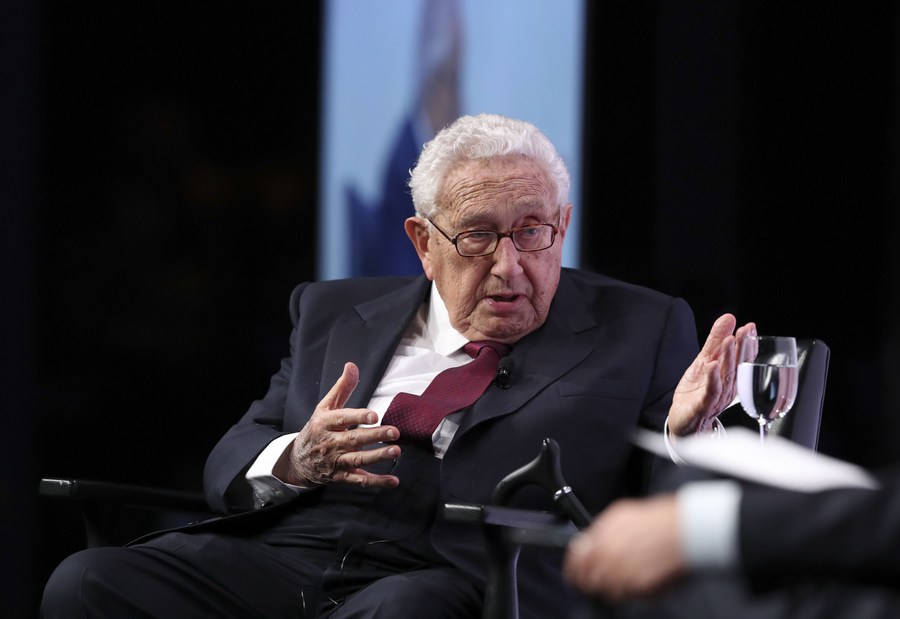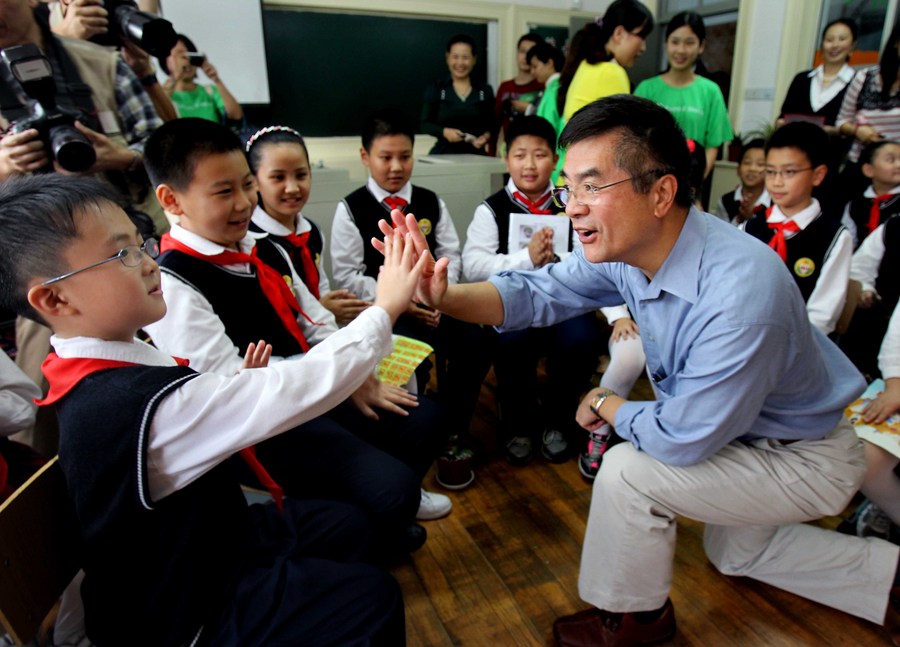Henry Kissinger: Peaceful Discussion Between China and the U.S. Key to International Order

The safety of the world depends on the two most advanced technological countries to remain in permanent dialogue and to attempt and achieve the settlement of their disagreements in a cooperative attitude.
Seasoned diplomats including Dr. Henry Kissinger as well as other public figures examined how China-U.S. relations should evolve in the next 50 years building upon the legacy of the Shanghai Communique at a forum on February 25. The forum was held in the coastal metropolis to mark the 50th anniversary of the signing of the landmark document by the American Chamber of Commerce in Shanghai, the National Committee on United States-China Relations, and the Committee of 100, an organization of prominent Chinese Americans. Here are views excerpted from the event:
Dr. Henry Kissinger, former Secretary of State of the United States
The joint communique is one of the most extraordinary diplomatic documents, I would say, in history. But let me describe briefly what the background involved. The United States and China had not had a sustained diplomatic dialogue for 25 years. From the beginning, President Richard Nixon and I decided that we could establish contact with China and then, through many complicated attempts, finally linked up. The fundamental intention of the strategy of dealing with China was to open the international system to one of its most important components, historically and in reality, which was the People’s Republic of China (PRC). And that was accomplished through these messages that went from Washington and Beijing via Pakistan to each other.
So after my trip to China [in July 1971], which opened the door, there was another set of meetings which prepared the Shanghai Communique about in October 1971. And it started with a normal communique-type discussion, after which there was a Chinese proposal, put forward by Chairman Mao Zedong, that the discussions should state the differences between the two sides, in order to highlight whatever agreements might be made. And therefore, the document that appeared was a highly unusual one, which included a statement of opposing views on a number of subjects. And it also stated agreements of great significance. [It was] a statement in which the United States affirmed that it would not challenge the concept of one China, a statement in which both countries indicated opposition to hegemony by any country in the world, and a statement about efforts of cooperation between China and the United States on matters of international import.
And the essence of what it said about Taiwan was that the United State accepted the principle of “one China” and therefore would not support a “two-China policy.” And China indicated it could be very patient about the process of eventual reunification. Those are the principles that were augmented by two more communiques in subsequent years that should maintain the basic structure of the discussion.
Now we’re meeting at a moment when it is not always one of cooperation between China and the United States, and I simply want to say that the safety of the world depends on the two most advanced technological countries to remain in permanent dialogue and to attempt and achieve the settlement of their disagreements in a cooperative attitude. Those are the key issues of our time. In the opinion of thoughtful people, the key to international order is restrained conduct and peaceful discussion between these two great societies.

Zhou Bingde, niece of Zhou Enlai, the first Premier of the People’s Republic of China, and founding President of the Enlai Foundation
China and the U.S. were caught in a confrontational gridlock without any diplomatic relationship before 1972. During the Bandung Conference in 1955, Premier Zhou rebutted a number of belligerent countries that made aggressive remarks against China with an 18-minute impromptu speech on seeking common ground while shelving differences and the necessity of achieving world peace.
He also issued a statement regarding the PRC’s acceptance of a possible negotiation with the U.S. on the Taiwan question. The statement, though brief, was widely reported and welcomed after it went public. Its significance carries on even today.
On February 21, 1972, Premier Zhou highlighted in his speech at Nixon’s welcome dinner, “American people are great people. Chinese people are great people. Both peoples have always been friendly to each other.” He also arranged for the band to perform two American songs–America the Beautiful and Home on the Range–during the dinner. Nixon shared his recollection of that night in his memoir that he was touched when hearing these two American favorites–the songs that he chose to play for his inauguration.
The past half century has taught us countless times that despite all the sensitivity causing rifts between China and the U.S., the two largest economies in the world share immense common interests. Peace brings win-win results, whereas fights incur damages. China and the U.S. must learn how to meet each other halfway. Both our peoples as well as the international community aspire to see a win-win bilateral relationship featuring mutual respect, cooperation and equality.
I would like to call on all civil groups, enterprises, think tanks and media outlets from both China and the U.S. to strengthen communications and exchanges. Trust and friendship can only be enhanced by amiable conversations, cultural exchanges and business interactions. They will play a vital role in building a healthy and stable bilateral relationship galvanizing strong support from the masses.
Gary Locke, Chairman of the Committee of 100 and former U.S. Ambassador to China
The 1970s is one of the most pivotal and fascinating decades. At the center of it all is the Shanghai Communique, connecting the past to the present–indeed the present to the future.
In July 1971, Kissinger, then Assistant to the President for National Security Affairs, while on a trip to Pakistan, took a secret trip to Beijing to meet with Chinese Premier Zhou. And his gift to Zhou was a rock from the 1969 Apollo-11 trip to the moon. Zhou and Kissinger conducted almost non-stop meetings over 2.5 days.
Their candid conversations about mutual interests–but also disagreements between the two countries–lay the core foundation for what would become the Shanghai Communique when President Nixon finally landed in Beijing on February 21, 1972.

It’s hard to imagine or remember a time when there was no contact. For the last 40-plus years, U.S.-China trade has helped lift hundreds of millions of people out of poverty–the most dramatic social and economic transformation the world has ever seen. The recent Chinese foreign direct investment is creating more than 2 million jobs in America. Scientific, educational and cultural exchanges have enriched both countries. The latest example is that at least three Chinese American Winter Olympic athletes, all born in the United States to immigrant parents from China, were able to exercise their freedom of choice as to what country to compete for in the recent Winter Olympics.
Our two countries are inextricably globally intertwined. The world today is very different from that of 50 years ago. During these times of great flux and rapid change, increasingly louder voices have been calling for decoupling, withdrawal and isolation. It has become popular and far too easy to blame or demonize the other and exploit differences rather than finding a way to bridge those differences.
In America over the past two years, Chinese Americans and Asian Americans have been the target of an unprecedented number of anti-Asian violent crimes and harassment due in no small measure to the false and inflammatory rhetoric, scapegoating and blaming the Asian community for the coronavirus. Ethnic Chinese students and researchers in America have also become caught in the dragnet of geopolitical tensions and suspicions between the United States and China, painted with a dangerous, broad-brushed stereotyping that people of Chinese descent are not to be trusted.
The Shanghai Communique is really one of the most remarkable and creative documents in U.S. diplomacy. Both sides laid out some of their most extreme ideological positions in social systems and foreign policy. There was no whitewashing of positions. Both sides disagreed on some fundamental ideological positions, but the two countries agreed that they could disagree, and that they should conduct themselves based on principles of respect for sovereignty and territorial integrity, and that neither would seek hegemony in the Asia-Pacific region. These are principles that our modern-day leaders and politicians should really examine. It is precisely this principle of seeking common ground while respecting differences that the Committee 100 has been practicing and advocating for all of our over 30 years of existence. And we still firmly believe in those principles, while we continue to promote positive and constructive engagement between the peoples of the United States and China.
If history has taught us anything, it is that even in the darkest of times, if both sides are willing and determined, change and breakthroughs are possible.
Despite the current tensions and disagreements, we must find a way to coexist peacefully and work together constructively. Only together can we ensure that the next 50 years and beyond is an era marked by peace, progress, and prosperity for all.
 Facebook
Facebook
 Twitter
Twitter
 Linkedin
Linkedin
 Google +
Google +










